A world expert in death cap mushrooms claims the victims of Erin Patterson’s deadly lunch never stood a chance because doctors in Australia were ill-prepared for such horrific cases – and the key drug used could quickly become ‘useless‘.
Patterson was found guilty of murdering her parents-in-law Don and Gail Patterson and her husband’s aunt Heather Wilkinson, and attempting to murder Heather’s husband Ian Wilkinson.
The three died after they ate beef Wellingtons made with lethal amanita phalloides ‘death cap’ mushrooms, while Mr Wilkinson survived after weeks of agony in hospital as doctors fought to save his life
The trio fell ill and died after the July 29, 2023 meal at Patterson’s home in Leongatha, in South Gippsland, Victoria, with Mr Wilkinson only surviving after a liver transplant.
But now leading US Dr L – who asked not to be named for professional reasons – claims the main drug used to treat death cap poisoning is virtually ‘useless’.
He said the three have suffered less and even survived if they had been treated differently.
Dr L claims the current medical literature in Australia for treating death cap mushroom victims is almost certainly out of date because there are so few cases here.
As a result, he said, it ‘does not prepare physicians for how incredibly fast things can get out of hand and careen downhill after an amatoxin [death cap poison] ingestion’.

Erin Patterson (pictured in Melbourne in April) faced a two-month trial for the alleged murders of her husband’s family members
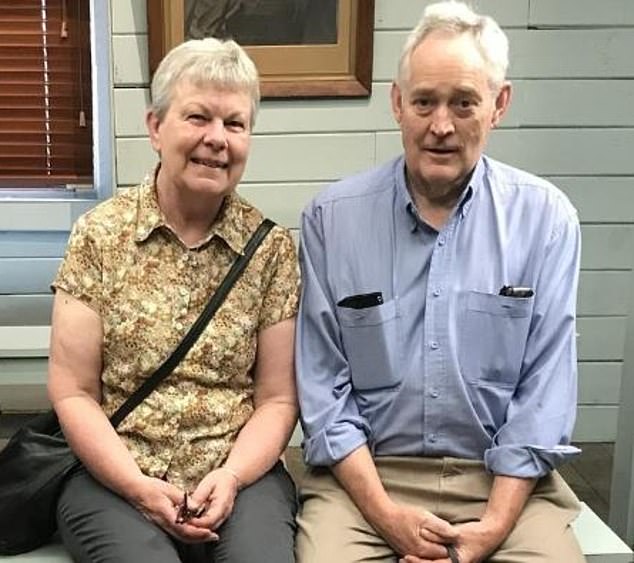
Heather Wilkinson (left) was first to die and her husband Ian (right) the only survivor. A death cap mushroom expert says the current Australian medical approach to amatoxin poisoning doesn’t sufficiently prepare doctors for its swift and dramatic effects
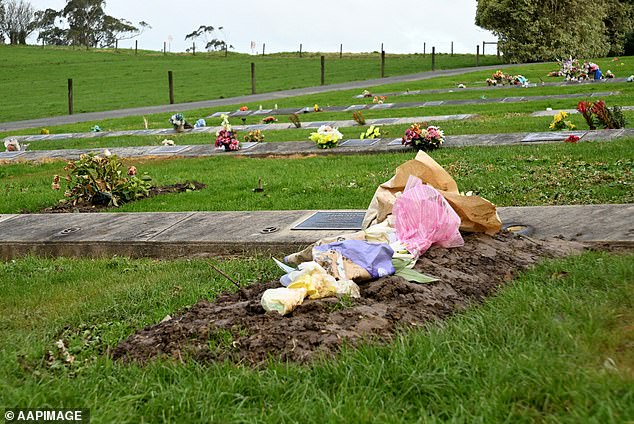
Flowers on the burial plots of Gail and Don Patterson at the Korumburra General Cemetery near Erin Patterson’s Leongatha home where they were fatally poisoned a month earlier
Some of the four Leongatha lunch guests were treated with the drug silibinin, made from milk thistle, and which works by flushing poison out through the kidneys.
But this relied on a death cap mushroom victim’s kidneys still being in working order, Dr L said.
And that may not have been the case for the four whose vital organs had shut down because of severe dehydration from vomiting and diarrhoea.
Dr L said the Victorian doctors and medical staff would be reliant on ‘past wisdom’ about silibinin, which said the drug was close to ‘useless’.
A Medical Journal of Australia research paper in 2013, Amanita phalloides poisoning and treatment with silibinin, found patients suffered poor outcomes.
Despite treatment with silibinin, patients crashed and burned with multi-organ failure.
But the key factor was the patients being taken off IV drips if their brain began to swell, which stopped the kidneys from functioning properly.
‘They went from sick to catastrophic in a short space of time,’ Dr L said.
‘The very rapid progression from ingestion to death is characteristic of cases where early low urine output acute kidney injury has occurred, and intravenous volume replacement has been inadequately aggressive.
‘Or it has been interrupted or there has been a restricted maintenance of IV hydration following admission to hospital.
‘I don’t know what occurred, and what the physicians, who must have desperately tried to save these people’s lives, must have gone through.
‘I have no knowledge of the management details and I haven’t seen medical records.

At Patterson’s home, police seized evidence including electronic devices

Erin Patterson (pictured) sobbed outside her home as details emerged of her fatal lunch and she denied having done anything wrong
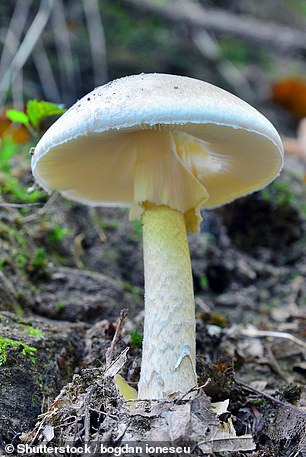
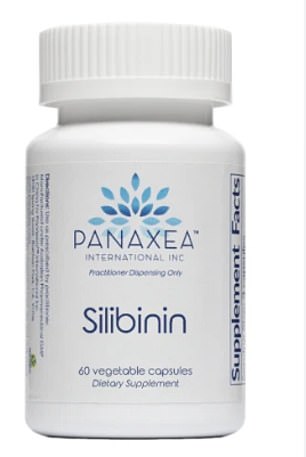
Deadly death cap mushrooms were reportedly used by Emperor Nero’s mother to kill her own husband. Silibinin (right) can help save victims, but the kidneys have to still be working to flush out the deadly poison
‘Few (doctors in Australia) have ever seen a single case and the one or ones they treat are the only ones they are likely to see across an entire career.’
Dr L said amatoxin was ‘a very clever poison’.
‘Silibinin is extremely effective in reversing the acute liver injury or failure resulting from amatoxin poisoning,’ Dr L said.
‘But it will fail if good renal function and brisk urine output are not maintained.
‘Why? Because silibinin diverts amatoxin away from the liver and back into the bloodstream for elimination by the kidneys.
‘The kidneys are actually the only physiological means of eliminating amatoxin from the body.’
Dr L said that treatment with a very aggressive IV volume replacement and maintenance of IV hydration might be halted if, as a patient got sicker, they started developing other alarming complications.
‘The problem might have been that as (the four relatives) got sicker they may have suffered from acute hepatic encephalopathy (which causes confusion and disorientation when toxins go unfiltered by the liver and affect your brain) and become comatose.

Husband Simon Patterson arriving at a Victorian court to testify at the triple murder trial of his ex-wife Erin

Erin had said, ‘F*** them’ about her parents-in-law Don and Gail Patterson, both 70, (pictured) after they supported their son Simon following his marital split

Ian Wilkinson (pictured at court) wears an early Christian fish symbol as he attends the trial at which Erin described some of his testimony as incorrect

Ian Wilkinson joked that he married the ‘baby’ of the family, Heather, who was Gail’s younger sister
‘This can create increased intracranial pressure and, to reduce the cerebral oedema, or brain swelling, which risks a stroke, the doctors would have responded by reducing the IV fluids.
‘If this was the case – and I stress I have no personal knowledge of their treatment – the doctors would be acting to reduce further risk to these terribly ill people.’
However, more recent treatments and medical wisdom outside Australia has found stopping aggressive IV treatment removes all chance of the amatoxin being expelled.
‘Lose the kidneys and all of the amatoxin in circulation gets taken up by the liver. Silibinin always fails in the face of poor renal function,’ Dr L said.
Transferred with acute liver failure to transplant units, the four victims would have entered a death spiral as their kidneys stopped making urine and, with nowhere else to go, the amatoxin in their blood was being circulated back to their livers.
The four’s enterohepatic circulation – where liver bile travels to the small intestine, where it is reabsorbed into the bloodstream and transported back to the liver – was in terminal decline.
‘Somehow, Ian Wilkinson managed to stay alive long enough for doctors to remove his liver and transplant him with a healthy one,’ Dr L said.
‘Again, the current medical literature does not prepare doctors treating such rare cases of amatoxin poisoning for how quickly the poison can act and things go downhill.’
Dr L said he had read reports that forensic examiners found no amatoxin in Gail or Heather’s blood, which ‘would be consistent with the toxico-kinetics, as amatoxin disappears from the blood within 24-48 hours of ingestion,’ he added.
‘Gallbladder fluid and the kidneys is where I would start, but having already found it in the two men, there was no doubt and therefore no point.’
HOW THEY DIED: WHAT HAPPENED AFTER LUNCH
The death cap mushroom, or amanita phalloides, is among the most poisonous plants on earth and contains the potent and deadly amatoxin.
The target organ of amatoxin – branded a ‘very smart’ poison by experts – is the liver, and will likely cause fatal liver failure if you eat it.
Victims will slip into coma and die in up to 50 per cent of cases, although death cap mushrooms account for roughly 90 per cent of mushroom poisoning deaths.
Notable deaths include Pope Clement VII, who died of ‘accidental’ death cap poisoning in 1534, and Roman Emperor Claudius, whose wife Agrippina the Younger allegedly fed him the poison in AD 54 for her son Nero to become emperor.
It only takes a tiny amount of mushroom to kill. One 1.88m man plucked a death cap off the grass at a mental health facility and only ate a minute nibble. He was dead within three days.
It doesn’t even take a full slice of poisoned beef Wellington to be fatal, although the death cap is notoriously delicious.
Just dropping a death cap mushroom into a glass of water is enough for a potentially fatal dose, unless you get urgent major medical care.

Gail Patterson (right) died on the same day as her sister-in-law, about 29 hours before her husband Don (left)
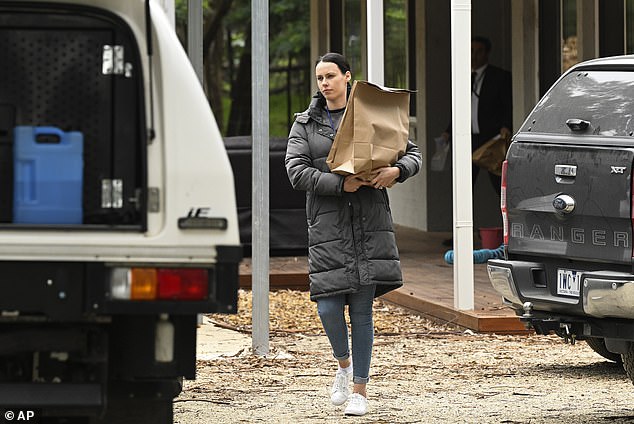
Police collected evidence from Erin’s Leongatha house where the four who were poisoned by her lunch dined and then died days later
But Patterson had coated her mushrooms in Dijon mustard and herbs, which usually makes for an intensely flavoured combination, although Erin said she found it ‘bland’.
Ian, Heather, Don and Gail would have very rapidly absorbed the poison after eating the death cap duxelles layer between the pastry casing and the beef eye fillet inside.
As Patterson next served up Gail’s cake and Heather’s fruit plate, the amatoxin was racing through the cells lining their gastrointestinal tracts and heading for their livers.
The guests’ gall bladders – the organ which contracts to inject bile into the intestine to break down the fatty pastry and French mustard – would then have had the amatoxin in their bile acids.
Bile acids are very highly conserved by the body, and recycle again and again after every meal, recirculating the poison around the body’s vital organs every time.

Erin Patterson arrived at court in a prison van after being transported from jail to attend hearings for her murder trial in south-eastern Victoria’s Gippsland area

Members of the public lined up from 5am at Morwell court in rural Victoria to get a seat and see Erin Patterson while she was on trial for the three alleged poisoning murders
For the first six hours after the lunch, Patterson’s guests could easily have been sitting at home with no symptoms whatsoever.
But before long – eight to 12 hours after dining – the vomiting and diarrhoea would have begun.
The initial onset of the symptoms might not necessarily have made them think anything other than food poisoning.
But by then the four would have already been extremely dehydrated and entering the inexorable spiral towards death.
A simple liver function test at that point might have saved the sisters and their husbands, had they known what Patterson had put in their lunch. It would have shown an unmistakable rise in their liver enzymes.
But that still would probably have been too late.
For by then the amatoxin would be causing vomiting and diarrhoea on a scale comparable with cholera, normally associated with third-world sanitation.

Erin Patterson’s friend Ali Rose Prior at the Morwell court during the trial at which Erin’s Facebook messages to other friends included her mockery and disdain of her family


Erin Patterson in the early 2000s (left) and a sketch of her (right) in the dock at her murder trial in country Victoria on charges of killing her in-laws
By then, in a desperate effort to preserve the blood supply to their brains and hearts, the victims’ systems would have drastically reduced blood flow to their kidneys.
The dehydrating effect of amatoxin was just working its sly evil and preventing the body from using its ordinary process to expel poisons.
Instead of being eliminated by the kidneys and urine as normal, the lunch guests became so dehydrated, they didn’t have the necessary fluid to urinate.
And so their death spirals continued. With reduced blood flow, their kidneys eventually ceased to work.
Without a flow of urine to clear them, the very high concentration of amatoxin was also causing irreparable injury to their kidney tubules.
The pain they experienced as they lay dying would have begun to peak.
They would have been wracked by agonising abdominal cramps with constant retching and crippling diarrhoea, as the physical suffering intensifying.
Once in hospital, their pain would have been managed with morphine or other drugs as doctors made their grim diagnosis and fought to save them.

Erin Patterson was taken to Wonthaggi Police Station (above) in early November, where she was interviewed, arrested and then placed in custody in Victoria’s biggest women’s prison

Ian Wilkinson attended the funeral of his wife, Heather, just days after getting out of hospital following his remarkable survival from the poisoning that killed three others
Daily Mail Australia has been told that apart from the physical pain and discomfort, there may also have been ‘the existential pain of realising that their livers were melting down in an unstoppable manner’.
And as their livers melted and acid filled their vital organs causing intense, ‘unstoppable’ pain even in the sole survivor Ian, death for his closest loved ones was still a few agonising days away.
Heather, 66, was the first to die, five days after the lunch on August 4, at 2.50am. Gail, 70, was next, at 5.55pm on the same day.
Don died the following day, a Friday, at 11.30pm.
Ian remained hospitalised for over seven weeks as he received a liver transplant and began taking the anti-rejection drugs that will be a daily necessity until he dies.
He was discharged on September 23, 2023.












